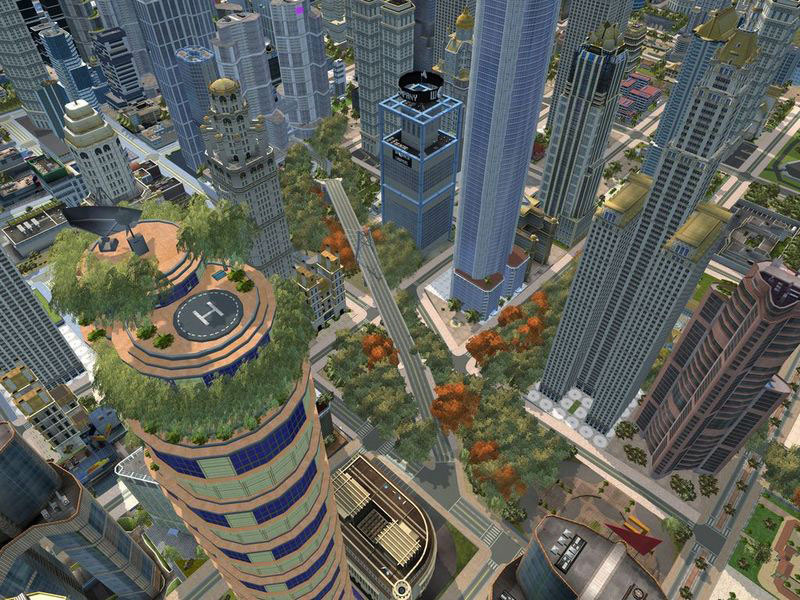

Whilst this sounds like it may be difficult to manage on paper, when you actually start to play you find out that it's fairly easy to manage different neighborhoods, as long as you make sure to keep them separate. If these classes move in near each other for some reason, conflict can occur, which has the potential to end in a drastic manner, with opposing cultures setting fire to each other's houses. Completely opposed groups (fringe and blue collar, for example) don't like living together at all, but a good city needs all of them to run its services and businesses. Each one of these cultures consists of highly stereotyped people ("Have Nots" wearing tatty clothes, "Fringe" driving VW van-style vehicles, and so on).

So, in what way does the cultural conflict manifest itself? There are six types of resident (with only the first three choosing to move in at the beginning of a game) Have Nots, Fringe, Blue Collar, Radical Chic, Suits and Elite. City Life, from French developers Monte Cristo, follows in its footsteps, providing a new twist on the formula you have to manage multiple conflicting cultures. Maxis created the standard for the city-building genre with their classic 1989 hit Sim City, which has spawned many series and spin-offs over the 17 years since its release, some official, others not. Online extras include the option to import and export cities and scenarios to and from your computer from the City Life website. Each objective has three conditions for victory. The game offers two modes of play: "Sandbox" and "Campaign." "Sandbox" sets up an open environment where you can build everything your heart desires, while "Campaign" mode requires you to complete mission objectives to move onto the next challenge. Placing a neighborhood of "well-to-do"s next to a neighborhood of "do-nothings" could cause a riot, or other unpleasant occurrences. The "have-nots" may be more interested in simple things such as a shopping center and a school, while the wealthier classes might want more extravagant facilities like airports and art museums. Instead of an overall "good" or "bad" rating from the general population, City Life features six different classes of citizens to keep happy.Īll six, ranging from the "have-nots" to the "elite" have specific needs and wants to be satisfied. The twist that makes City Life different from other metropolis planning games is the importance placed upon the different people living in the city. In City Life, you must build your city, zone for construction, and bring in taxes, but it doesn't end there.


 0 kommentar(er)
0 kommentar(er)
